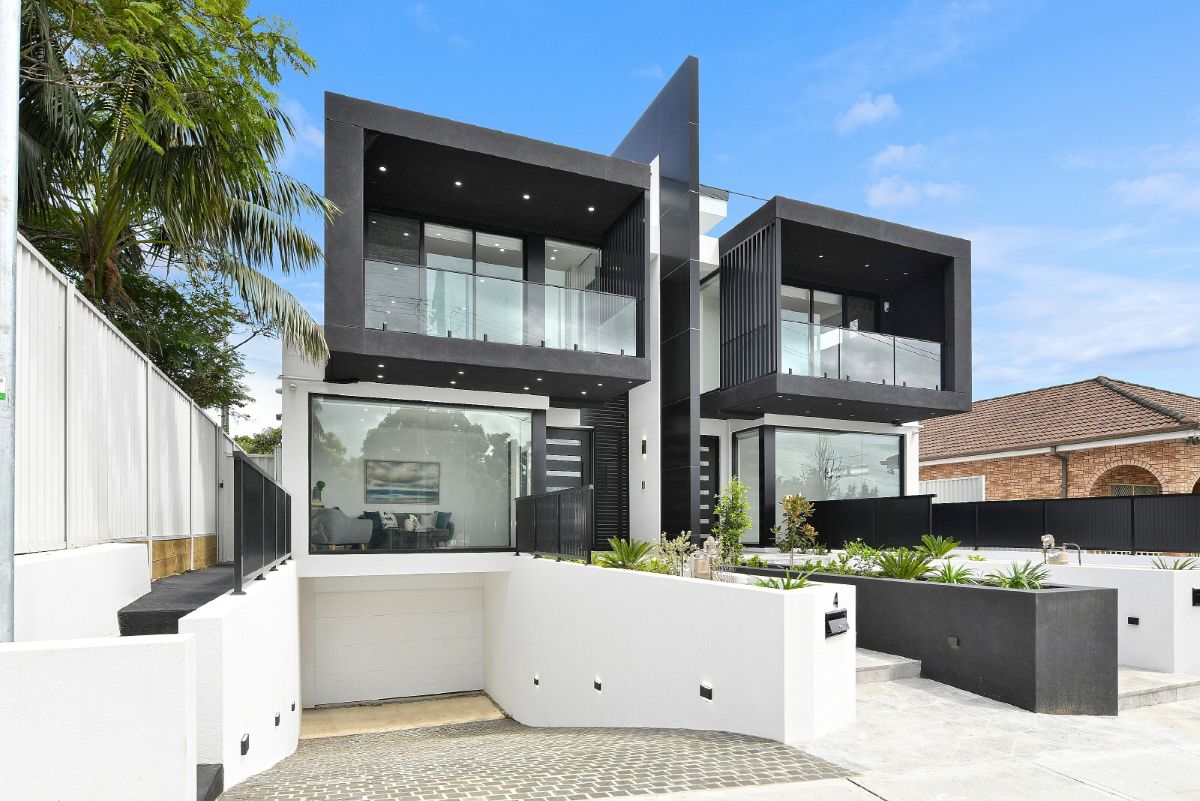Maximise the Potential of Your Dream Home on a Sloping Block
Acquiring a sloping block in Sydney often proves to be a more cost-effective option compared to purchasing a flat plot; however, this decision does not mean compromising on quality or the market value of the property.
Indeed, a sloping landscape can serve as a remarkable advantage when collaborating with a proficient custom builder who possesses the expertise to design homes that complement the natural terrain.
From innovative downward sloping block house designs that seamlessly incorporate garage basements to stylish split-level homes that enhance natural light and provide stunning views, sloping sites present opportunities that flat lots simply cannot offer, paving the way for unique architectural expressions.

How Can You Leverage a Sloping Block to Enhance Your Living Experience?
The essential principle for optimally utilising sloping land is to design in accordance with the slope, rather than against it.
A downward slope that descends towards the street is particularly well-suited for designs featuring basement garages or living spaces that extend effortlessly into the backyard.
Conversely, an upward slope offers an ideal foundation for multi-level or split-level homes, facilitating a creative stepped design that fosters elevated, private areas.
For properties showcasing side-to-side gradients, implementing terracing or imaginative retaining walls can yield striking architectural results.
When your design aligns with the natural contours of the slope, it opens avenues for multi-level living. This results in layered spaces, unique architectural features, and lifestyle amenities that are simply unattainable on flat blocks, providing a living experience enriched by the environment.
What Steps Should You Follow to Successfully Build on a Sloping Site?
Constructing a home on a sloping site necessitates more intricate planning than building on a conventional flat block. It all starts with a thorough site evaluation that includes soil testing, drainage analysis, and precise slope measurements.
From this comprehensive assessment, your builder and engineer will propose the most suitable foundation system, which may include options such as pier-and-beam, split-level, or slab-on-grade techniques, particularly in areas where the slope is moderate.
Furthermore, a well-designed drainage system is vital in this process. Without effective drainage solutions, stormwater can endanger foundations or create flooding problems. Local councils frequently impose stricter approval processes for homes erected on slopes, often requiring detailed reports on soil stability, water management strategies, and environmental impact assessments.
Engaging a builder with extensive knowledge of these requirements will not only save you valuable time, but also help avoid potentially costly delays.

What Are the Main Challenges and Considerations When Building on Sloping Sites?
Building on sloping sites presents specific challenges that homeowners must be prepared to address:
- Soil stability requires thorough testing to ensure secure foundations and long-lasting structural integrity, crucial for the safety of your home.
- Foundation systems differ according to the slope’s gradient; typically, steeper sites necessitate piers or split-level foundations to adequately support the structure.
- Excavation and earthworks may be essential to level or modify sections of the site, which can considerably increase overall costs.
- Drainage must be meticulously designed to manage water runoff effectively and prevent soil erosion, ensuring the longevity of your property.
- Council regulations may be more stringent, especially in areas prone to bushfires or flooding, necessitating comprehensive compliance and documentation.
- Access for vehicles and pedestrians might require innovative design solutions to ensure safety and ease of movement throughout the property.
These factors often discourage many builders from undertaking projects on sloping blocks; however, with the right expertise, every challenge can be transformed into a valuable opportunity for innovative design and construction, leading to truly unique homes.

Discover the Distinct Advantages of Building on a Sloping Site
Architectural character
Constructing on sloping sites allows homes to blend seamlessly with the natural landscape, resulting in breathtaking architectural forms, layered facades, and floor plans that resemble bespoke creations rather than conventional designs.
Multi-level living
Split-level or tiered layouts effectively differentiate living zones, enabling families to benefit from private retreats, entertaining areas, and practical connections between indoor and outdoor spaces.
Space for lifestyle features
A sloping block naturally accommodates additional features such as basements for gyms, home cinemas, or wine cellars, alongside expansive outdoor living spaces that beautifully harmonise with the site’s contours.
Long-term value
Homes constructed on slopes generally stand out in the property market. Their unique architectural character, presence, and functional design contribute to strong resale potential, making them a wise investment opportunity.
How Much Should You Allocate for Building on a Sloping Block?
This question is frequently among the first homeowners pose. Unfortunately, there is no universal answer, as costs can vary significantly based on factors such as gradient, soil type, accessibility, and overall design complexity. Typically, a gentle slope of around three metres across the building area is manageable without incurring excessive costs. However, more pronounced slopes may necessitate additional excavation, retaining walls, and specialised engineering solutions.
While the initial costs associated with building on a slope may exceed those of a flat block, the long-term benefits—including enhanced lifestyle options and increased resale value—often justify the investment and provide rewarding returns.
What Are the Disadvantages of Building a Home on a Slope?
The primary disadvantages relate to costs and complexity. Earthworks, retaining walls, and drainage systems can considerably affect the overall budget. Additionally, the construction timeline may extend due to increased engineering requirements and local council approval processes.
Access, both during the construction phase and after the home is completed, can present challenges, especially on particularly steep blocks, requiring careful planning to ensure safe and efficient movement.

Why Is It Essential to Avoid Standard Builders for Sloping Sites?
The unfortunate truth is that opting for inexperienced builders can lead to significant complications. Constructing on sloping land without the guidance of a knowledgeable builder can result in critical issues, including unstable foundations, potential water damage, and soaring budget overruns. A sloping block builder in Sydney offers the essential structural expertise and strategic planning needed to ensure that the slope is used to your advantage, transforming potential challenges into opportunities.
Transform Your Sloping Block into a Valuable Asset with Professional Guidance
At Phase Projects, we view sloping sites as exciting opportunities for innovation and design.
Whether your vision encompasses a downward sloping block house design complete with a basement garage or a split-level home that elegantly frames the stunning Sydney skyline, we specialise in converting challenging terrains into extraordinary custom luxury homes.
Our dedicated team manages the entire process, from geotechnical testing and securing necessary approvals to construction and final handover, ensuring a smooth and successful project.
The Article: Building on a Sloping Block in Sydney: What to Expect first appeared on https://writebuff.com
The Article Building on a Sloping Block: Expectations for Sydney Homes Was Found On https://limitsofstrategy.com/


